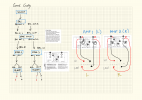MajorMajorMajorMajor
Member
Hi,
My friend has connected a Freya+ to 2 Vidar amps, and each and is connected to a MartinLogan 60XTi Speaker.
The Pre Amp is set on the differential gain tube setting (maybe you guys could clarify those settings for me? Schiit didn’t respond.)
The amps are in the “Mono” configuration.
When he turns the volume up to about 70%, the amps shut off.
Now, I’m not particularly savvy about this stuff, but I think it’s because the speakers are rated as 4/5 ohms.
But they’re “8-ohm compatible”!
Is there a way to bi wire or something to make the amps run it in a 8 ohm “mode”?
Idk… I feel bad because I kind of recommended this setup to this guy based on how my setup does fine with a lot less power and actually harder-to-drive speakers.
My friend has connected a Freya+ to 2 Vidar amps, and each and is connected to a MartinLogan 60XTi Speaker.
The Pre Amp is set on the differential gain tube setting (maybe you guys could clarify those settings for me? Schiit didn’t respond.)
The amps are in the “Mono” configuration.
When he turns the volume up to about 70%, the amps shut off.
Now, I’m not particularly savvy about this stuff, but I think it’s because the speakers are rated as 4/5 ohms.
But they’re “8-ohm compatible”!
Is there a way to bi wire or something to make the amps run it in a 8 ohm “mode”?
Idk… I feel bad because I kind of recommended this setup to this guy based on how my setup does fine with a lot less power and actually harder-to-drive speakers.

